She’s a Brick… (School)House!
Coventry (Google Maps Location)
May 20, 2007
“Baby, I’m going to a museum in Coventry. Be home in a couple hours – I’ll be seein’ ya!” I would venture to guess that 99.9% of the time when someone says that to their spouse, they are on their way to the Nathan Hale homestead – one of Connecticut’s best-known museums honoring one of Connecticut’s best-known native sons. However, the CTMQ household prides itself on being that other .1%.
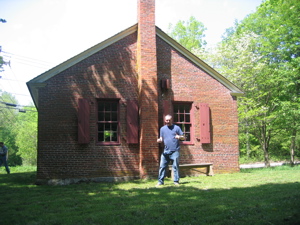
I had a free Sunday afternoon, the weather was clearing, and I felt the itch. I needed a reason not to get in the car and go! (The thought just occurred to me that most wives deal with husbands leaving to go fish or to play golf on warm and sunny Sunday afternoons. Hoang? Her husband leaves her to check out a rarely visited musty old one room school house 40 minutes away. Until death do us part!)
Having driven the route to Coventry many times to and from college, I was familiar with the area – or so I thought. Once I turned off of Route 44 I was transported to rural Connecticut, complete with manure wafting through the air. A few twists and turns and before I could say, “Wait. What the heck am I doing?” I was parking in the shade of a huge oak tree in front of a tiny little brick building. It actually looked more like a municipal pump house or something equally as mundane.
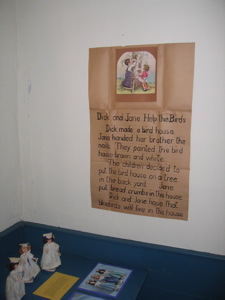
I gathered up my tools (pen, paper, camera) and ventured inside. “Hello and welcome,” said Coventry historian Ginney Dilk, who was sitting alone filling out some paperwork. It’s always at this point when I stumble on my words. I feel as though I need to explain why I am visiting, taking notes and taking pictures – but somehow make it sound cool and normal. It’s impossible, I know, but I try.
I took a (very uncomfortable) seat at one of the 100-year-old desks and listened to Ginney’s spiel. This little school was operational all the way up to the mid 1950’s! “Really?” I asked. Wow, Coventry sure is rural. Yes, three families sent their kids here in the early to mid 50’s and in fact, there are reunions every so often of all the living teachers and students who attended the Brick Schoolhouse, which really surprised me. I associate one room school houses with wagon trains and Donner parties, not a town within 20 miles of downtown Hartford, CT.
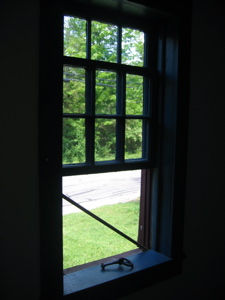
Most everything at the museum is original, but I never did get a firm answer on whether or not the whole structure was. There had been many modifications since it was built in 1825, so it was hard for Ginney to confirm. But we do know that the foundation and steps into it surely were from 1825. I made sure to touch them. With my lips. Twice.
Prior to 1825, a 12 foot by 14 foot wooden school had stood in the same spot since the mid 18th-century. It burned down at some point, which paved the way for the brick structure we can enjoy today. Of course after it was no longer used as a school, it fell into disrepair until some lady bought it from the town for a dollar, solicited donations, and restored it to a museum setting.
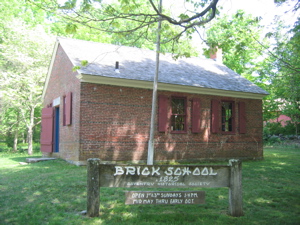
After hearing all this great stuff from Ms. Dilk, I walked around the room… old desks, old photos, old Dick and Jane books. Oooh, a real slate chalkboard! At this point, a father came in with his three kids. Wait a minute… What? I wouldn’t be alone? This development threw me for a loop, especially as I hadn’t taken my pictures yet. I stepped outside to gather myself and checked out the grounds. Hm. It’s brick and it’s one room and hey, where did they go to the bathroom? The woods?
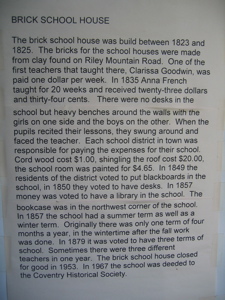
Nope, it turns out there was a little outhouse here on the property that was destroyed by a falling tree a few years ago. The Coventry Historical Society is trying to raise money to rebuild it… Cripes, what’s that cost? Fifty bucks? If someone representing them reads this and contacts me, I’ll help them out. At the least I’ll give them more money than Clarissa Goodwin was paid to teach here back in the 1820’s… One dollar a week. And while I’m at it, perhaps I’ll also step up and help the Society out with verb tense grammar lessons since they need it, as evidenced on the sign in the picture above.
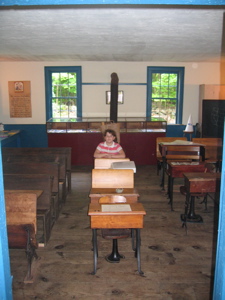
Sheesh. That sign was out in the vestibule area where I also found a little collection of children’s activities – coloring sheets and old timey lesson plans and such. But the coolest thing was a card stock little school house cut-out form, which I just had to have. I dipped back into the room and wrapped up my conversation with Ms. Dilk. We talked about how the kids had to walk all the way from the street corner from the bus. Um, that’s great, but I can assure you that I walked further every single day of my schooling aside from Pre-School and 4th through 6 grades.
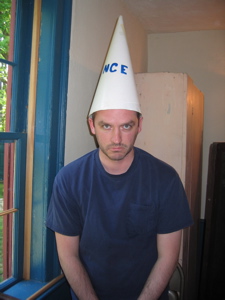
“Intelligence?” “Excellence?” “Flatulence?” “Prince?”
We talked a little bit about local old cemeteries but I tuned that out; heck, when you have a list of 700 museums to get to, adding cemeteries to my “to-do” list just isn’t happening. She mentioned her own pet project of documenting and then attempting to restore old one room school houses around the area – even if all that remained was a crumbled foundation. I dutifully nodded and expressed my appreciation for her passion.
I then took 10 more random and arguably boring pictures of the room, bid Ginney adieu and bon chance, and got in my car to drive across town to another museum, the Strong-Porter Museum.
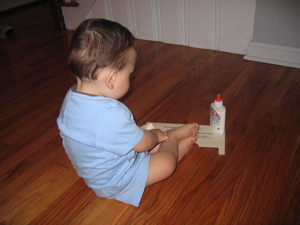
I took the cut-out school house home and left it on the floor absentmindedly. I half noticed Damian fiddling with it and…
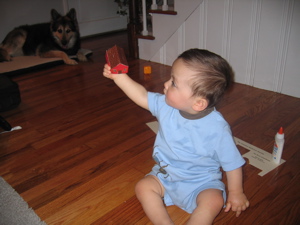
Voila! The kid has skills.
Coventry Historical Society
CTMQ’s Museum Visits

 Reggie delarm says
Reggie delarm says
May 22, 2008 at 5:43 amHello. I just found your wonderful website! I am a potter and for over 30 years I have been making old styles of pottery here in Torringford CT. I also live in my families old brick house c. 1820. I have been learning more about the brickyards in my area and found your web site when trying to learn more about brick houses.
Do you know of an expert in the building of early CT brick houses? I wonder if my bricks were made up the road from me at our local Hayden brick yard, and whether brick homes were designed and build by common farmers or did they hire an archetect or brick mason… where can I find out more about the building of these early brick houses… also I have been looking for old ads in newspapers around 1800s and cant seem to find any..
Any suggestions?
Thanks, Reggie
 Ginney Dilk says
Ginney Dilk says
June 5, 2008 at 8:23 amGlad you enjoyed the paper schoolhouse and thank you for the publicity. I just have a few comments….
1. Replacing the outhouse with a functional, handicap accessable facility that resembles the original will require not only the building but a new septic system. I’m afraid it will cost more than $50.
2. The wooden building that the Brick School replaced was located to the west of the present structure. It was not located where the Brick School is now.
3. The paper in the foyer with the grammar problems was written by Mabel Hall, the lady who talked the town into letting the historical society buy the building for $1, organized and managed the renovation and wrote the booklet The Brick School” to raise funds for the renovation. The foyer paper is an enlarged copy of what she wrote in her book. It may not be the best grammar but she gets her point across.
4. I’d settle for a driving map to all of the one-room schools; I don’t want to renovate or take on any more buildings!
I too associated one-room schools with the western US and was surprised to find out how long the school remained open.
Come back for another visit. This years display includes pictures and artifacts from all 10 of the Coventry School Districts.
Sincerely,
Ginney Dilk
 Debbie says
Debbie says
August 17, 2008 at 11:29 amJust visited and can attest to the fact that this is a great place to bring the kids – or just go yourself as I did. You will definitely gain an appreciation for what education was like in the “olden times.” Ginny Dilk encouraged me to sit at one of the school’s wooden desks and write with the old “nubbed” quill pens. There is a great exhibit of all the old schoolhouses in Coventry, many of which I recognized, having driven by them frequently but never knew of their original use. They also have a nice collection of old textbooks as well as some newer publications from various town’s historical societies, one of which I’m definitely going to buy for myself. It’s a wonderful way to spend a Sunday afternoon – and there’s a little park up the road a piece for a family picnic afterwards!